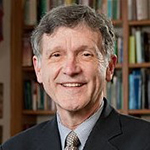 By Bill Leonard
By Bill Leonard
“He’s in the classroom.” That’s what the 911 caller said to the operator in Roseburg, Ore., around 10:30 a.m. on Oct. 1, 2015. The caller alerted authorities to the brutal presence of a shooter at the Umpqua Community College where nine people, ages 18 to 67, were shot dead. Seven others were wounded, among them a 16-year-old early-college student who lost a kidney from the shooting. Doctors say she will recover. The 26-year-old gunman was a member of the class.
The killings, which ended with the gunman’s suicide, represented the 45th school shooting in the first 274 days of 2015. With it, the all-too-familiar-gun-death-rituals began: ambulances and body bags; air-lifted wounded; grieving families; makeshift shrines; candlelight vigils; and public officials declaring: “Our thoughts and prayers go out to the victims and their families.”
In his requisite public response, President Barak Obama could contain neither his emotion, nor his rage, asserting:
“But as I said just a few months ago, … a few months before that, and I said each time we see one of these mass shootings, our thoughts and prayers are not enough. It’s not enough. It does not capture the heartache and grief and anger that we should feel. And it does nothing to prevent this carnage from being inflicted someplace else in America — next week, or a couple of months from now.”
Challenging media outlets to compare American deaths by firearms with those killed in terrorist attacks, the President continued:
“We are the only advanced country on Earth that sees these kinds of mass shootings every few months. Earlier this year, I answered a question in an interview by saying, ‘The United States of America is the one advanced nation on Earth in which we do not have sufficient common-sense gun-safety laws — even in the face of repeated mass killings.’ And later day, there was a mass shooting at a movie theater in Lafayette, Louisiana. That day! Somehow this has become routine. The reporting is routine. My response here at this podium ends up being routine. The conversation in the aftermath of it. We’ve become numb to this.”
In other responses, left-of-center folks again called for “universal background checks,” and tightening “gun show” restrictions, any kind of passible legislation that might limit the shooting cycle. Right-of-center folks warned that “feel-good” legislation would not address the “complexity” of the overall firearm situation. One presidential candidate observed that “stuff happens,” since deranged persons can appear unpredictably; another labeled the event “a matter of evil,” more a problem of mental health than firearms. The rhetoric subsided, the memorial services were held; and the nation awaited the next mass shooting.
The phrase, “He’s in the classroom” haunts me still, perhaps because I’ve spent much of my adult life in the sacred space of classrooms, where student and teacher alike should confront the vulnerability of life and death ideas, but not life and death itself. I teach at a university with its own elaborate warning system intended to lock-down the campus should a rogue shooter appear. Some states even permit students and faculty to carry concealed weapons into classrooms as an implicit or explicit deterrent. In my academic context, the presence of gun-toting divinity school students and faculty would surely generate considerable symbol confusion (except perhaps in Texas).
Classroom shootings remind us that we are all vulnerable. If such horrific incidents can happen at Columbine High School (1999), Virginia Tech (2011), or Umpqua Community College (2015), they can happen anywhere. And schools are not alone. Shopping malls, restaurants, movie theatres, homes, mosques, synagogues, Sikh temples, and churches (Catholic/Protestant, liberal/conservative) have not escaped the violence.
As a professor of Christian history and an ordained Baptist minister I’m stuck with inescapable questions of theology and praxis:
• From a religio-cultural perspective, has the Second Amendment become an inerrant document that validates a form of “firearm idolatry” to be preserved at all costs?
• Given the presence of some 250 million firearms and the inevitability of the “deranged shooter,” won’t any mediating reforms be a long time coming, if ever?
• Do we simply accept the reality of firearm violence as the terrible but inevitable price of a “free” America?
• Shouldn’t we work toward certain firearm legislation that might at least save some men, women and children?
• Might religious communities encourage or extend programs that address and assist persons’ mental and spiritual derangement which can destroy themselves and their victims?
• Can faith communities develop early-warning strategies for responding to unexpected firearm tragedies in mass or drive-by shootings, family abuse, or suicides (60 percent of gun-related deaths)?
• Might churches take the lead in training groups “second-responders” to respond specifically to individuals and families struck by firearm violence?
• How might churches best rise to the occasion, offering sustained spiritual resources as alternatives to the fear, paranoia and numbness engendered by yet another violent shooting from yet another troubled human being?
The week after the “Umpqua incident” I decided to start locking my classroom after students are inside, a simple if symbolic reminder of an unpredictable American reality.
